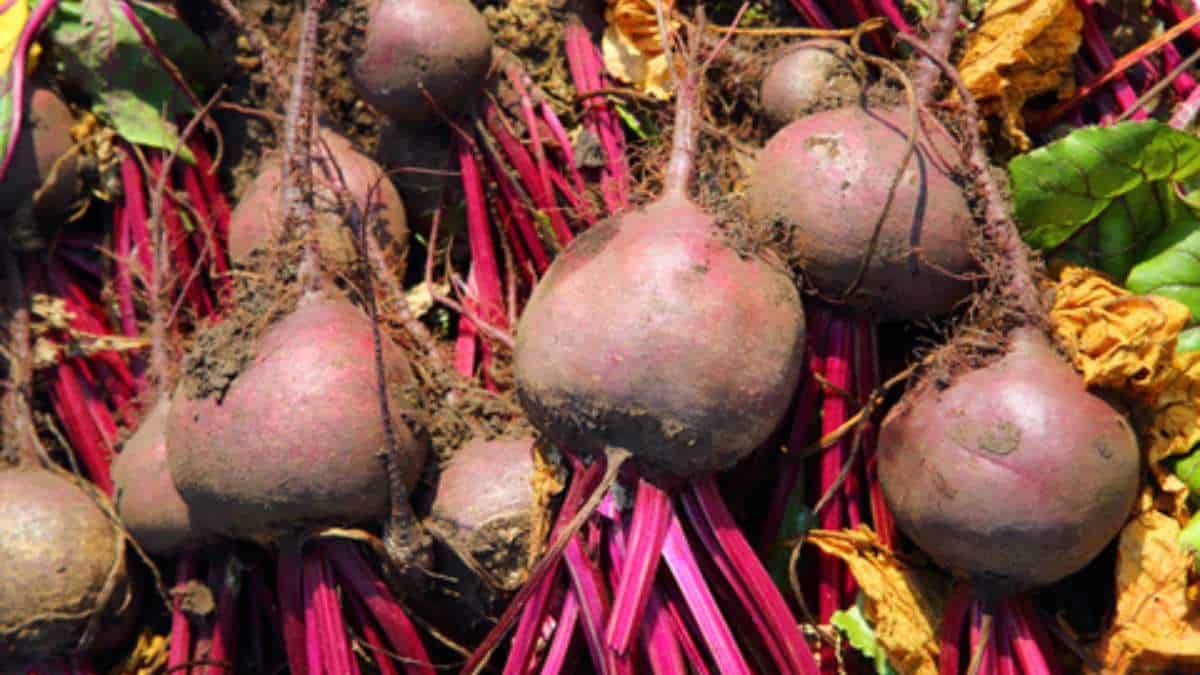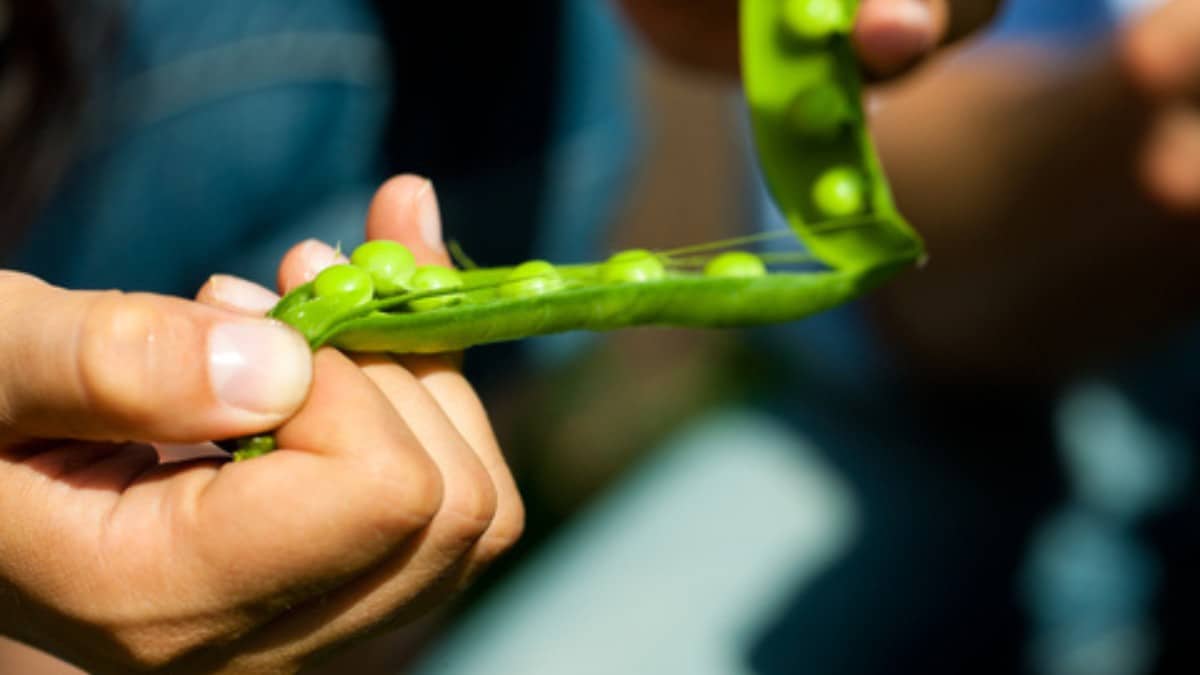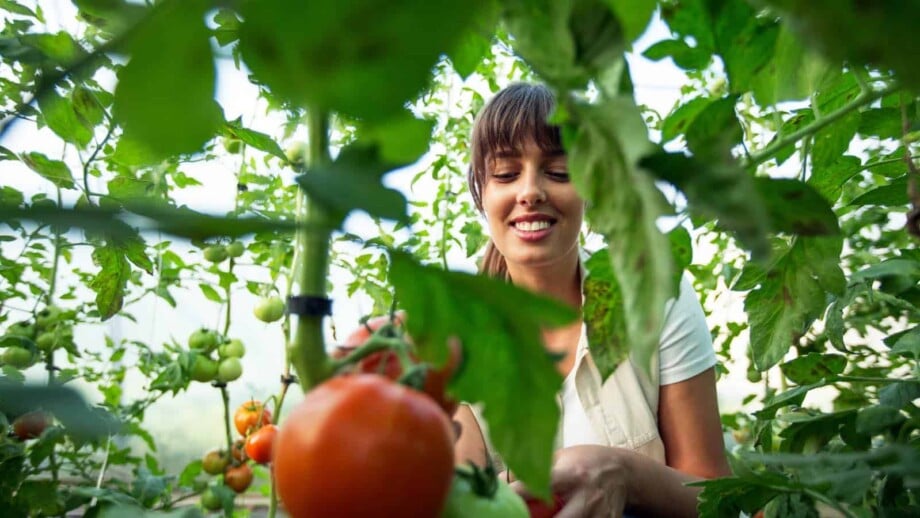The appeal of homegrown vegetables goes beyond their delectable taste, as they are devoid of harmful chemicals and offer superior nutritional value compared to store-bought alternatives.
If you aspire to embark on the journey of growing your own vegetables, it’s advisable, to begin with the easiest crops. This ensures a higher likelihood of success and a bountiful harvest of delicious produce.
Timing is pivotal in achieving favorable outcomes, as different crops thrive under specific climatic and temperature conditions. Mastering this knowledge is essential to avoid common beginner mistakes.
To assist you in this endeavor, here are the top 12 easiest vegetables that you can effortlessly grow at home:
Potatoes

Growing potatoes is a breeze when you opt for the convenient method of planting them in bags or large tubs on your patio. To ensure successful growth, shield your crops from frost and plant them starting in March.
Potatoes can sprout and even start growing independently as if they’re eager to join your gardening adventure. When cultivating potatoes, it’s customary to use seed potatoes—regular potatoes are chosen explicitly for their disease-free nature and suitability for growing new plants. However, sprouted store-bought potatoes can also be planted if you’re feeling experimental.
Carrots

Mastering the art of growing carrots is relatively straightforward. These vibrant and nutritious vegetables thrive in loose sandy soil and can even flourish in a 5-gallon bucket, making them accessible to gardeners with limited space.
When planting carrot seeds, it’s important to sow them thinly in raked soil, leaving approximately a foot of space between rows. Take care to sow the seeds slowly, as overcrowding can attract carrot flies, a notorious pest that threatens this vegetable. To avoid this, thinning the crop may be necessary.
Carrots are renowned for their speedy growth, making them an excellent choice for children’s gardens. The delight of harvesting these colorful roots in late summer and early fall brings pure joy. For optimal results, consider growing carrots in raised beds, as they provide a favorable environment where the roots are less likely to encounter rocks or dense, hard soil.
Tomatoes

Often perceived as a challenging vegetable to grow, Tomatoes can be pretty accessible, especially when selecting hardy and adaptable varieties. The ease of cultivating tomatoes largely depends on your climate and the specific variety you choose, allowing for outdoor or greenhouse cultivation.
The journey of growing tomatoes becomes remarkably rewarding when you make the proper selection. The most straightforward approach involves planting garden-ready or grafted tomato plants directly into vegetable grow bags. These bags provide an ideal environment for their growth.
It’s crucial to ensure that tomato plants receive ample water and are provided with potash every couple of weeks. These measures will support their development and encourage a fruitful harvest.
Cucumbers

For successful cucumber cultivation, proper preparation is vital. Begin by enriching your soil with a high nitrogen and potassium fertilizer to provide essential nutrients for robust growth and generous yields. Choose a sunny location near a fence, as it will support the plants to climb and offers shelter.
Cucumbers are a versatile vegetable that caters to both beginners and experienced gardeners alike. You have two options for initiating their growth: direct sowing of seeds in the garden or acquiring starter plants from garden centers. Both methods yield favorable results and can be adapted to suit your preferences and gardening approach.
Swiss Chard

Swiss chard, also known as “chard,” belongs to the beet family and thrives in various weather conditions, ranging from cool to warm. This leafy vegetable is packed with nutrients and is considered a superfood, boasting high levels of minerals, fiber, phytonutrients, and vitamins A, K, and C.
Growing Swiss chard is relatively hassle-free, as it readily adapts to various environments. This versatile green will flourish whether you have a sunny garden or a partially shaded area. You have the option to cultivate colorful chard stems right at home or acquire starter plants from garden centers, making it accessible to both novice and experienced gardeners.
Bell Peppers

Bell peppers undergo a delightful transformation as they progress from green to vibrant shades of yellow, orange, red, purple, or chocolate brown when fully matured. It’s worth noting that if you harvest them early, they will still develop their color but won’t become sweeter.
Given the right conditions, growing bell peppers is a gratifying garden project, suitable even for beginners. Proper temperatures, well-nourished soil, and a little tender loving care are the keys to success.
Providing the peppers with a fertilizer rich in phosphorous and calcium is recommended for optimal growth. It’s advisable to avoid high-nitrogen fertilizers, as they tend to stimulate leafy growth rather than promote the development of flavorful fruits.
Cabbage

The summer season presents an opportune time to cultivate cabbage, a vegetable that thrives in cooler temperatures. While most cabbage varieties are typically grown for fall harvest, you can start planting cabbage seeds in the early to mid-summer period to ensure a successful crop for the autumn season.
When planting cabbages, following the instructions on the seed packages is crucial, ensuring that you allow enough time for the seeds to mature before the arrival of fall.
It is advisable to utilize a gentle natural fertilizer. This will provide the necessary nutrients for both the plants and the soil, fostering optimal development.
Although cabbage is generally considered an easy-to-grow and low-maintenance crop, it is crucial to be vigilant for common pests like cabbage worms. Regular monitoring and timely treatment of any pests will help preserve the health and productivity of your cabbage plants.
Salad Greens

Growing your salad greens offers the remarkable advantage of not requiring a traditional garden space. With just a tray of soil and a sunny windowsill, you can easily grow an abundance of fresh salad leaves. Sow the seeds into the compost, ensuring proper care, and within a span of three to four weeks, you’ll be relishing your own homegrown crops.
For outdoor salad leaves, you have several options: window boxes, raised beds, patio containers, or directly in the ground. Late spring is an ideal time to sow the seeds for these crops. By periodically sowing other seeds every two to three weeks and selectively harvesting individual leaves, you can extend your cropping season and continually enjoy a plentiful supply of fresh greens.
Radishes

If you’re a beginning gardener seeking an easy and rewarding start, learning how to grow radishes is the perfect choice. They grow incredibly fast, and their zesty flavor adds a delightful pop to many dishes.
Radishes exhibit reliable germination when directly seeded into the soil, and within a month or even less, they are ready to be harvested.
Although radishes thrive under full sun, these tangy little roots can also tolerate shady areas, displaying their adaptability.
Radishes are also an ideal choice for novice gardeners because of their resilience against pests and ability to withstand frosty conditions.
Zucchini

Renowned as one of the easiest vegetables to grow at home, zucchinis presents a hassle-free gardening experience. They boast a remarkable resilience against natural pests and offer an abundant yield that often exceeds the expectations of most gardeners. This versatile vegetable grows effortlessly from seeds, which are notably larger than other vegetable seeds, making them easier to handle and plant.
When planting zucchini, you can either start with potted seedlings or directly sow zucchini seeds. Whether you choose a large container, in-ground garden soil, or a raised bed, ensure that the selected space provides ample room for the zucchini plants to flourish. Zucchinis thrive in well-composted soil, so make sure to provide them with nutrient-rich conditions. It is advisable to plant zucchinis three to six feet apart, allowing each plant to bask in the warm soil and receive an abundance of sunlight.
Beets

Beets, also known as beetroot, are a delightful addition to any vegetable garden. These compact and vibrant vegetables offer visual appeal and trouble-free growth, making them a must-have in your garden.
To grow these colorful vegetables, it’s best to plant the seeds in a sunny location. Plant the seeds at a depth of half an inch, spacing them approximately one to two inches apart within rows that are about a foot apart. As the beets grow, thin out the seedlings, leaving three to four inches of space between each plant to ensure healthy development.
Patience is key when growing beets, as they require around two months to reach maturity. You’ll know they are ready for harvest when the roots protrude above the soil’s surface, eagerly awaiting incorporation into your future recipes. Don’t overlook the leaves of the beet plants either, as they offer a delightful and nutritious addition to sautés and other culinary creations.
Peas

Peas are an excellent choice for individuals residing in cool or damp regions. Peas offer various options, including shelling peas, sugar snap pods, and crisp mangetout.
Growing peas is a straightforward process – sow your pea seeds directly into the ground anytime between March and June. It’s crucial to support these climbing plants using chicken wire and canes.
Your peas will be ready for picking in approximately two to three months, typically from June to August. An exciting aspect of growing peas is that the more you harvest, the more they will continue to produce!
Peas are known for their rapid growth and easy germination, ensuring a bountiful harvest before you realize it. Delight in the satisfaction of watching your pea plants flourish and enjoy the reward of their tender and flavorful pods.
Avoid a Pathetic Garden by Following These 12 Gardening Tips

Have you decided it’s time to dive into the beautiful world of vegetable gardening? Prepare yourself for a fulfilling and successful journey using these 12 essential tips and tricks for your garden. Learn the secrets of planting in intervals, selecting suitable crops for your geographical zone, using the power of sunlight to enrich your harvest, and more.
12 Easy Vegetables to Grow at Home Even if You Have No Idea What You’re Doing

Homeowners are increasingly turning to palms for their landscaping needs. Learn about 20 of the most popular palm trees for homeowners here.
10 Plants You Should Absolutely Never Grow in Your Garden

Gardening is a pastime relished by many people. There’s something about planning and cultivating a garden and seeing your efforts come to fruition. It’s a gratifying feeling. Growing the wrong plant species can dampen the joy of that experience. Avoid these plants and flowers to have a garden you’ll always enjoy and be
10 Beautiful Outdoor Plants That Are Impossible To Kill

Thanks to the expertise of garden professionals, numerous plants have been found to grow and thrive in climates believed to be hopelessly barren. So whether your yard is drought-prone, shady, or has sandy soil, these hardy flowers and plants make a gorgeous addition to any garden.
10 of the Scariest Plants In the World According to Botanists

We all know about poison ivy and oak, but what are the real big baddies of the plant world? That’s what one plant-lover, or at least plant enthusiast, wants to know. They ask about the “scariest plants” in an online forum, and there are almost too many fascinating and terrifying answers for comfort.
This originally appeared on Planet Natural.











